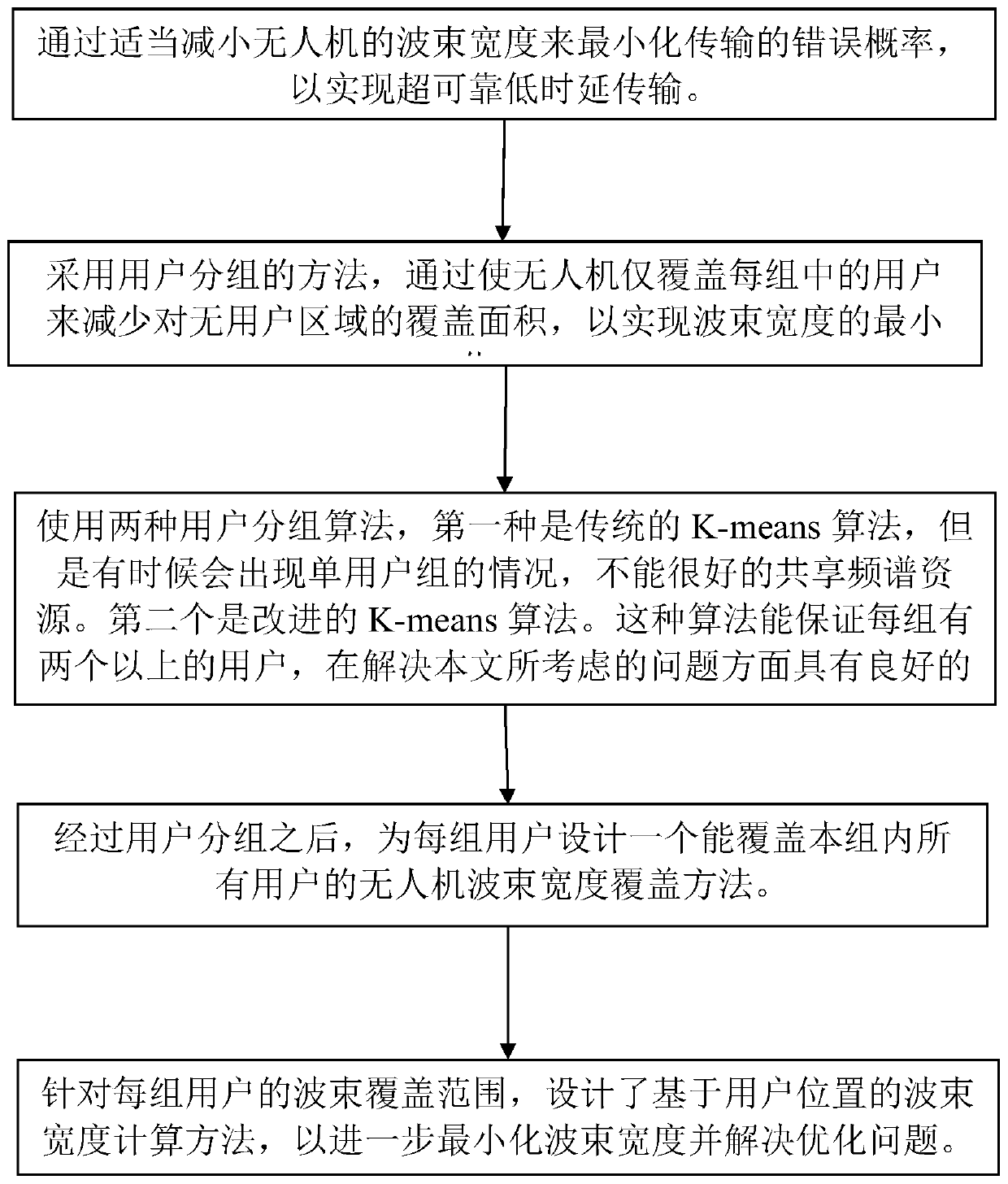Method for designing non-orthogonal multiple access beam width of unmanned aerial vehicle
A non-orthogonal multiple access and beamwidth technology, applied in the field of ultra-reliable and low-latency transmission design, can solve the problems of reducing beamwidth, inability to effectively reduce beamwidth, reducing coverage area, etc., to reduce beamwidth , Ultra-reliable delay transmission, the effect of reducing the probability of errors
- Summary
- Abstract
- Description
- Claims
- Application Information
AI Technical Summary
Problems solved by technology
Method used
Image
Examples
Embodiment Construction
[0037] In order to make the object, technical solution and advantages of the present invention clearer, the present invention will be further described in detail below in conjunction with the accompanying drawings.
[0038] see figure 1 , the application scenario of the present invention is: in a network in which UAVs communicate with ground users, the UAV is located directly above the area, and multiple users are randomly distributed in the area. Adjacent users are classified into the same group according to the differences in user distribution locations. If there is a single user group, merge this single user into a group closest to this user. Or if the number of users in the adjacent group is greater than three, select a user closest to the single user from the adjacent group and divide it into the single user group.
[0039]Our goal is to ensure that each group has more than two users, using non-orthogonal multiple access transmission that can share spectrum resources. ...
PUM
 Login to View More
Login to View More Abstract
Description
Claims
Application Information
 Login to View More
Login to View More - R&D
- Intellectual Property
- Life Sciences
- Materials
- Tech Scout
- Unparalleled Data Quality
- Higher Quality Content
- 60% Fewer Hallucinations
Browse by: Latest US Patents, China's latest patents, Technical Efficacy Thesaurus, Application Domain, Technology Topic, Popular Technical Reports.
© 2025 PatSnap. All rights reserved.Legal|Privacy policy|Modern Slavery Act Transparency Statement|Sitemap|About US| Contact US: help@patsnap.com



